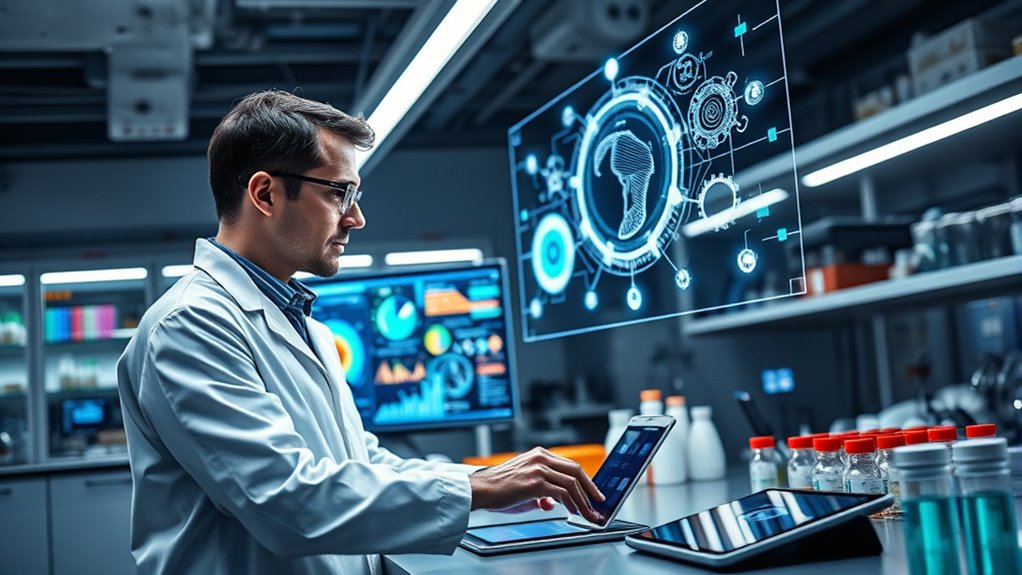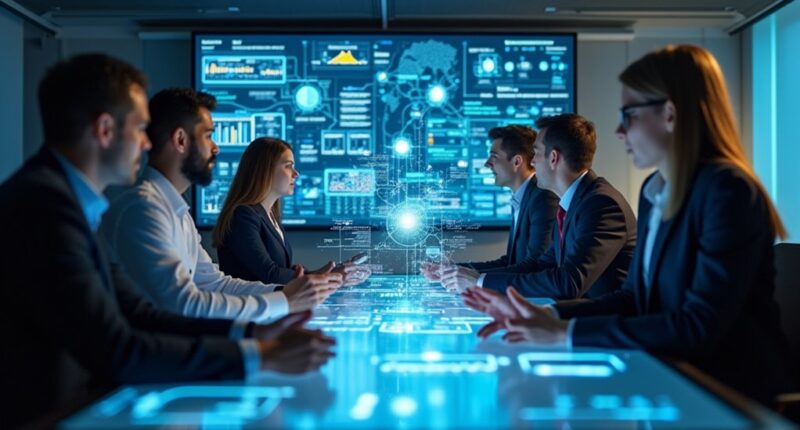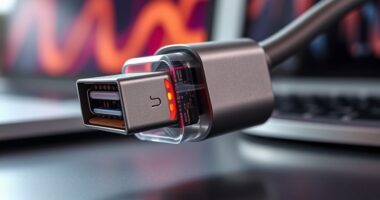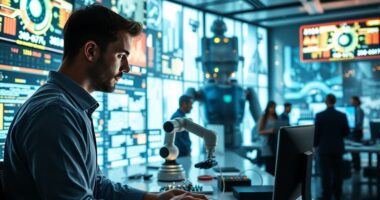In CPG innovation, integrating human insights with AI systems that learn from human feedback is essential. This approach guarantees your AI stays agile, relevant, and able to adapt quickly to market shifts. Human-in-the-loop AI combines the analytical power of machines with human judgment, boosting product development and strategic agility. By embracing this synergy, you position your brand for sustainable growth. Keep exploring how this winning combination can transform your innovation efforts.
Key Takeaways
- Human-in-the-loop AI combines human judgment with machine learning for more accurate and context-aware innovation.
- It ensures agility and adaptability in product development, preventing over-reliance on automated systems alone.
- Human oversight helps maintain ethical standards and compliance in AI-driven decision-making processes.
- Integrating human insights accelerates product innovation cycles and responds better to market trends.
- This approach sustains long-term growth by balancing AI capabilities with human creativity and strategic thinking.

In the rapidly evolving Consumer Packaged Goods (CPG) industry, innovation isn’t just about adopting new technologies—it’s about integrating human expertise with AI systems that learn and adapt. You need to leverage AI-driven demand forecasting and retail analytics to stay competitive. These tools now play a vital role in demand sensing and personalization, enabling you to predict sales more accurately and tailor marketing efforts to individual customers. With customer data platforms (CDPs), hyper-personalized campaigns can deliver a 66% higher return on investment, making your marketing more effective. Omnichannel analytics provide real-time inventory tracking across online and brick-and-mortar stores, giving you better control over stock levels and reducing out-of-stock scenarios. Spend analytics help optimize trade promotions, offering data-driven insights that improve your marketing efficiency and profitability. Leading brands like Nestlé and P&G showcase how AI-powered retail analytics directly boost market competitiveness, demonstrating tangible benefits for your business.
But technology alone won’t drive innovation; it’s how you integrate human insights with AI that truly delivers results. Generative AI chatbots, for example, improve internal collaboration and ensure policy compliance, supporting your employees and sales teams in their daily tasks. AI insights accelerate product innovation by about 30%, reducing concept-to-market time and allowing you to respond swiftly to market trends. IoT-enabled smart shelves provide real-time data on inventory and customer behavior, empowering you to make smarter inventory management decisions. Bluetooth-enabled shelves enhance the shopping experience by syncing with customers’ lists, increasing sales at your stores. AI-driven digital planograms optimize in-store layouts and promotions, boosting shopper engagement and conversions. These integrations highlight how human expertise and AI work together to refine operations, create better customer experiences, and speed up innovation.
Your workforce is also adapting to AI adoption. By 2025, 96% of CPG companies plan to expand hiring for AI-related roles, reflecting the industry’s commitment to this technology. Nearly half already see significant productivity gains from AI, though many still view it mainly as an improvement tool rather than a disruptive force. You may face challenges in scaling AI across your organization, as only about 33% of AI adopters report widespread use. Still, with over 140 AI use cases spanning forecasting, inventory management, marketing, and ecommerce, the potential for impact remains high. AI investments are already influencing major value streams, reducing costs while increasing revenue and margins. As AI adoption accelerates, more companies are integrating AI into core functions, with 71% deploying it in at least one area by 2025—up from 42% just two years earlier. According to industry reports, the integration of AI into core business functions is a key driver of competitive advantage in the CPG sector.
In this environment, competitive advantage comes from combining human judgment with AI’s learning capabilities. Leading CPGs are leveraging AI-driven insights to reinvent growth, moving beyond gut instinct decisions toward continuous, data-backed improvements. Human-in-the-loop AI systems ensure your organization remains agile, innovative, and capable of turning technological advancements into sustainable growth.
Frequently Asked Questions
How Do Human-In-The-Loop Systems Improve AI Accuracy in CPG?
You improve AI accuracy in CPG by actively monitoring and correcting its outputs, especially in complex or uncertain cases. Your feedback helps refine the model, reducing errors and biases over time. By validating AI decisions on nuanced consumer preferences and emerging trends, you guarantee more precise predictions. This collaboration builds trust, enhances transparency, and ensures the AI aligns with ethical standards, ultimately making your CPG innovations more reliable and effective.
What Skills Are Essential for Managing Ai-Human Collaboration in CPG?
You need strong technical skills in data analytics, AI technologies, and system integration to manage AI-human collaboration effectively. Communicate clearly with diverse teams, fostering teamwork and understanding AI’s capabilities and limits. Use strategic thinking to align AI efforts with business goals, and cultivate emotional intelligence to handle socio-emotional aspects. Stay aware of ethical issues, regulations, and cultural nuances, ensuring responsible and fair AI-human partnerships in CPG.
How Does Human Oversight Prevent AI Biases in CPG Innovation?
Human oversight acts as the lighthouse guiding AI through foggy waters, preventing biases from leading your CPG innovation astray. By actively reviewing and validating AI outputs, you catch hidden prejudices and inaccuracies early. You guarantee diverse data is used, ethical standards are upheld, and societal values are respected. Your vigilance keeps AI aligned with human morals, fostering fairness and trust in your products, and steering your innovations toward responsible, inclusive success.
What Are Common Challenges in Implementing Human-In-The-Loop AI?
You face challenges like slowing down workflows due to human review, which limits speed and scalability. Costly training and maintaining skilled personnel strain budgets, especially for smaller organizations. Ensuring consistent, reliable feedback from humans can be difficult, risking AI accuracy. Integration issues with existing systems and steering through complex regulations add hurdles. Resistance to change and ethical concerns also hinder smooth adoption, making it tough to balance human oversight with automation efficiency.
How Cost-Effective Is Integrating Human-In-The-Loop AI for CPG Companies?
Integrating human-in-the-loop AI is highly cost-effective for CPG companies because it streamlines operations and reduces labor costs while maintaining oversight. You can quickly scale AI from pilots to core processes, leading to significant savings—up to 50% by 2027. Although initial investments are needed, the long-term benefits include improved decision-making, faster product launches, and resource reallocation, ultimately boosting profitability and competitive edge.
Conclusion
You might think AI alone can drive CPG innovation, but history shows human insight remains vital. Human-in-the-loop systems blend AI’s speed with your judgment, ensuring smarter decisions. Some argue AI can fully replace humans, but complex consumer behaviors and ethical considerations suggest otherwise. By integrating human expertise, you create a more adaptable, responsible approach. Ultimately, combining AI with human oversight isn’t just practical—it’s essential for true innovation in the CPG space.









